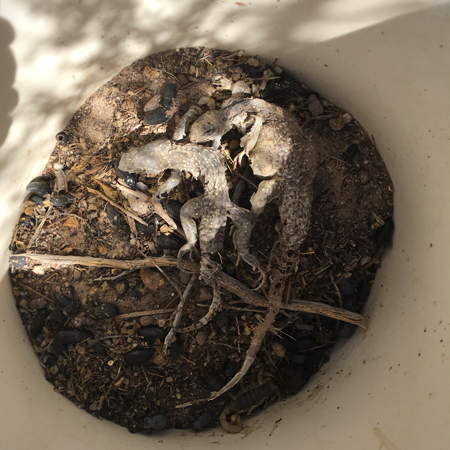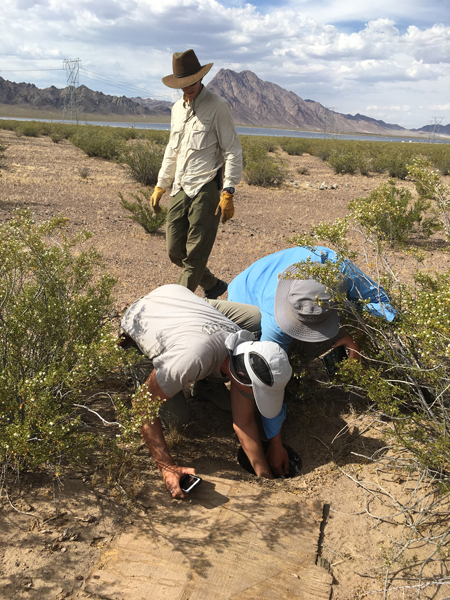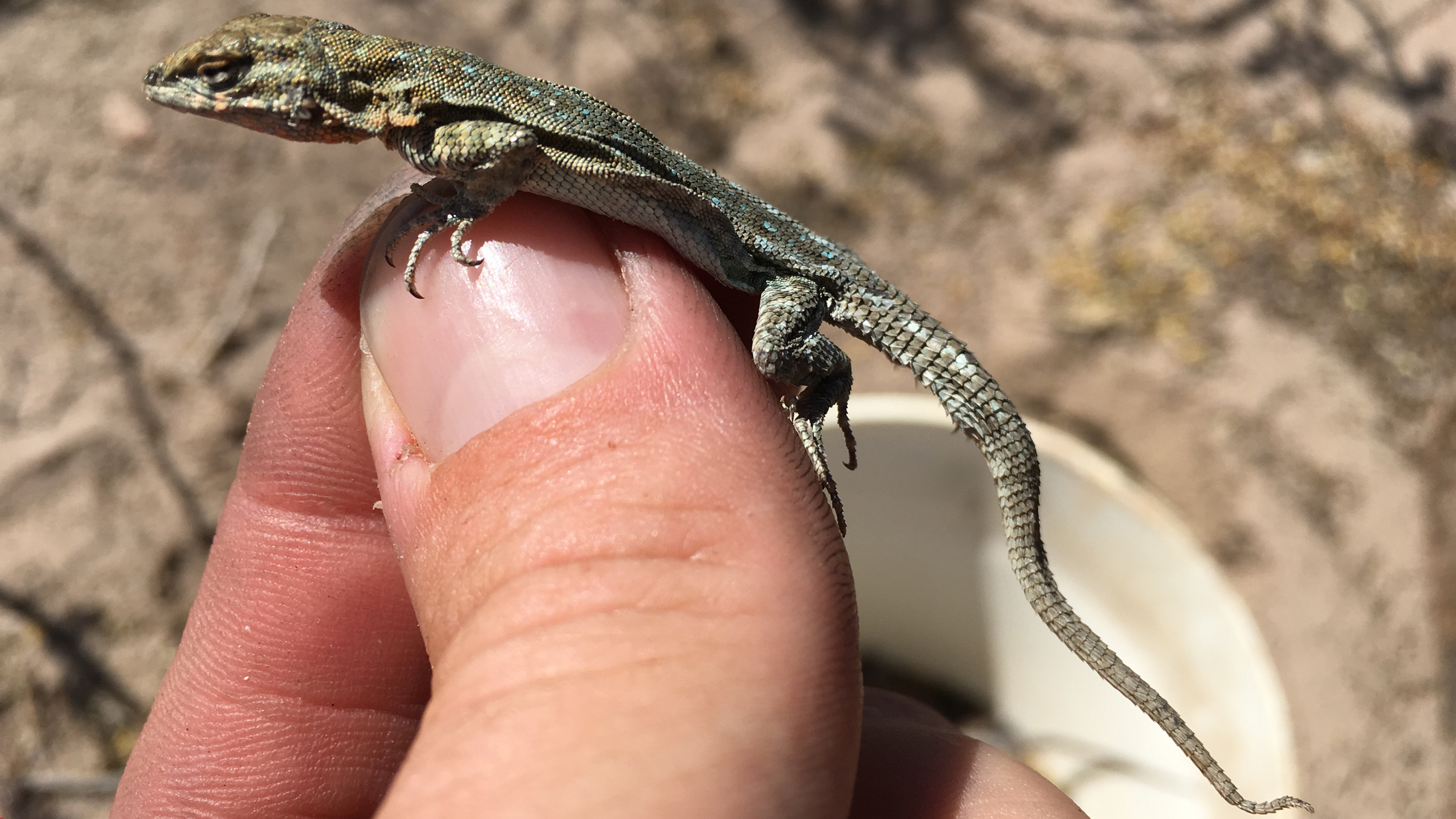When good people make themselves heard wildlife mismanagement can end in minutes. That’s what happened in Nevada on September 23, 2017.
Details later. First, flash back one day. September 22: Nevada is the only state that permits unlimited take of reptiles for the commercial market. No closed season, no bag limits. You can take as many as you want whenever you want.
“While the wildlife [department] knows how many reptiles are caught each year, the agency doesn’t have a clue how many are left behind or whether commercial collecting is harming them,” reported the Reno Gazette-Journal. “Biologists across the country are alarmed. They point to state statistics, which show a 40 percent decline in the number of animals collected [over the last four years].” That piece ran September 20, 1998. Nineteen years and two days later the only thing that had changed was that the agency had acquired a clue — unrestricted commercial collecting was severely harming reptile populations.
In profitability, trafficking in wildlife is second only to trafficking in narcotics; and reptiles make up most of the wildlife trade. A Gila monster, for example, goes for $2,000 on the black market. The U.S. dominates global trade in wild reptiles. Fourteen thousand wild reptiles were said to leave Nevada annually, most bound for European pet shops. The real figure, though, was almost surely far higher because the only data available issued from the collectors who were required to report take to the Nevada Department of Wildlife (NDOW). So the Reno Gazette-Journal erred in reporting that the department “knows how many reptiles are caught each year.”
Collectors from other states converged on Nevada to cash in on the bonanza. And reptiles from surrounding states vanished into the black hole.

Herewith, some of the more popular targets and what single specimens recently fetched on the European market: horned lizard ($110), leopard lizard ($77.53), collared lizard ($195), chuckwalla ($250), desert iguana ($141), patch-nosed snake ($89.79), shovel-nosed snake ($96.91), banded gecko ($96.95).
Little is known about most of Nevada’s 53 native reptiles other than they tend to be long-lived and reproduce slowly. The plunder has hurt foreign reptiles, too — exports from the U.S. have unleashed snake fungal disease in England, Germany and Australia.

The Nevada take appears to have been almost entirely illegal. Collectors were permitted to catch reptiles only by hand. Instead, they used “pitfall traps” — five-gallon buckets usually buried under creosote bushes. The vegetation drew in reptiles, mammals and invertebrates seeking shade and moisture in this our driest state. Victims pushed their way under plywood cover boards, then fell into the buckets. Collectors evaded prosecution by claiming they were really after scorpions, correctly noting that the state has no authority over invertebrates.
Dr. Phil Medica, a herpetologist with the U.S. Geological Survey, makes this point: “Some of the take reports are physically impossible without pitfall traps — like [hand collecting] 600 lizards in a day or collecting geckos in the daytime.”
At the August 19, 2017 meeting of the Nevada Wildlife Commission (the regulatory entity comprised of sportsmen and other lay folk) one of the more active collectors — Robert Bentz of Pahrump, Nevada — disclosed that trapped reptiles are useful in sustaining the scorpions collectors say they target: “The lizards are in the cans and are feeding the scorpions and we are catching them.”

Unlike warm-blooded wildlife, reptiles can go without food and water for weeks or months, so they’re easily smuggled in hollowed-out books, suitcases and water bottles. Mislabeling is a major problem. For example, if an inspector doesn’t know what a Gila monster looks like, he’ll okay a shipment labeled chuckwallas. About 90 percent of trafficked wild reptiles die from capture and transport trauma, but the 10 percent that survive sustain profits.

On September 1, 2017 NDOW’s herpetologist, Jason Jones, told me this: “Every time we’ve taken this to the Wildlife Commission it has declined to limit collection. We’re not only depleting reptile populations indiscriminately but also killing other animals. This could have catastrophic, ecosystem-level ramifications. We’re the source of all the Great Basin Mohave/Sonoran reptiles species to be trafficked nationally and internationally. Reptiles are more tied to the landscape than anything else. What’s scary is that with 17 years of drought you have a lot of threats and pressures on populations that are just eking out existence in this really limited desert landscape.”
In 1989 the commission heeded NDOW’s warnings and adopted a temporary regulation banning commercial reptile take. This elicited a lawsuit by the collectors and an injunction from the Eighth District Court preventing NDOW from enforcing the ban. On appeal, however, the decision was reversed by the state Supreme Court, which ruled that the burden of proof that commercial collecting wasn’t harming reptile populations was on the collectors, not the commission. During the course of that litigation the commission’s temporary ban expired. Despite NDOW’s successful appeal, the commission allowed unlimited commercial take to continue.
“What can the commission be thinking of,” I asked a high-ranking federal wildlife official stationed in Nevada the same day I interviewed Jones. Requesting anonymity, he replied: “It’s almost a [Cliven] Bundyesque attitude: ‘I make money collecting reptiles on public land. My father and grandfather made money collecting reptiles on public land. Government doesn’t have a right to tell me what I can and can’t do.’”

“Unless you check pitfall traps daily, you’re going to get a lot of mortality,” notes Dr. Ken Nussear, a research wildlife biologist with the University of Nevada, Reno. “Once animals drop into that bucket there are a lot of different species in there, and they start eating each other.”
But few if any pitfall traps are checked daily or even weekly. One line of 83 pitfall traps was seen to contain 450 dead reptiles including three federally threatened desert tortoises. In another survey of 307 traps 64 percent contained reptiles, of which 47 percent were dead; and 31 percent contained mammals, of which 96 percent were dead. Many of the living victims were hideously emaciated; and the tails of some of the lizards had been gnawed off.
John Karges, associate director of field science for The Nature Conservancy in Texas, points out that such mortality figures are gross underestimates. “If shrews and small pocket mice fall in these traps, they either succumb to exposure or predators like weasels, ring-tailed cats and coachwhip snakes,” he says. Antelope ground squirrels have been seen leaping out of traps with victims in their mouths. When snakes, large spiders and scorpions fall in they eat everything. And reptiles decompose quickly.

Jason Wallace of the Desert Studies Center at California State University in Fullerton runs a long-term study (nine years so far) in which he inventories trends in reptile populations, most of which extend into Nevada. His permit allows him to use pitfall traps provided he check them once a day. In hot weather he checks them three times a day. Everything gets promptly released.
“A pitfall trap does not discriminate,” declared Wallace on September 11, 2017. “Anything that’s crawling around can fall into it. I’ve come across pitfall traps just left randomly out in the desert. They’re full of dead stuff. It’s hard enough to live in the desert anyway. Pitfall traps are irresponsible and cruel. You’re dropped in the bottom of a hole and slowly starve or bake to death. Nevada is a bullseye in the middle of the Southwest for anyone to come in and just take, take, take. It’s crazy. Half a million reptiles have been taken from Nevada and sold overseas in the last three decades. That’s not sustainable. If I killed what I caught, it wouldn’t take me long to wipe out the whole area.”
But recovery is underway. The Bureau of Land Management is removing pitfall traps from land it manages. They were installed without BLM authorization; nor were they analyzed through the National Environmental Policy Act or the Endangered Species Act.

And at the September 23rd Nevada Wildlife Commission meeting NDOW made its case yet again to ban or limit commercial take of reptiles. This time the commission was feeling intense heat from the public, the BLM, environmental community, biologists (including the ones quoted above) and local and national media.

There wasn’t even much debate. The commission voted 6 to 1 to ban all commercial take of reptiles.
Since virtually all reptile collecting in Nevada was illegal anyway, will poaching continue? Undoubtedly it will.
If the alleged targets are invertebrates, pitfall traps are not banned; thousands are still strewn across southern Nevada. And enforcement teeters between enormously difficult and impossible. Nevada game wardens photographed collectors lugging large coolers to their vehicles, something they wouldn’t do if they were really after just scorpions. But the judge dismissed the case because there were no shots of the reptiles themselves. Law enforcement is spread thin over vast areas; and the emphasis is on birds and mammals sought by hunters.
Still, as of September 23, 2017 Nevada will no longer tolerate or defend commercial take of reptiles, and shipment of reptiles out of Nevada will be far more difficult. That may discourage pitfall poachers, especially ones flocking in from other states.





Sadly, this isnt a surprise – the attitude towards any wildlife by far too many in this country is the same as in any country – 3rd world or whatever! Look at the kind of slaughter that many states are fantasizing about in regard to native predators. Does anyone seriously believe this attitude doesnt carry forth towards these smaller creatures – especially if there is money to be made!
I wish I wasnt this pessimistic when it comes to species other than human – dominant? Scary!
At the same time, thank you for writing about it & hopefully bringing it to the attention of more people.
I just read this article from 2017. It is interesting and provided good information. I would love an update on what has happened since this was written.
thanks for saving God’s creatures…many rewards good friend..
Some really good reporting and writing. I knew there were lots of reptile breeders, but I wasn’t aware of the extent of this corner of the wildlife trade, and more importantly, the impact of it.
The anecdote about the collectors photographed leaving the scene toting coolers is interesting. Were the critters in the coolers? Seems the wardens could (and did) naturally posit that, but also appears they had no seize/search authority.
Why are collectors not subject to drastic state action that is identical to that of hunters, i.e. wherein wildlife agents can perform warrantless searches at will. Ethical hunters accept this intrusion in order to thwart and lock up the poachers. Sounds like the law needs to catch up as concerns collectors.
Saying this as an arch-libertarian personally, but this kind of plunder is unconscionable.
. Animals that have survived since the dinosaurs are on the verge of extinction again, thanks to greed and profit.
Thank you for highlighting this tragic situation.
Interesting story. I was recently in the deserts of Arizona, Nevada and California. Hoped to see snakes, lizards, scorpions and a roadrunner. For three werks walked and drove. No sighting. On the day I flew home from Phoenix, I went to a park near the airport. Saw a rattlesnake and roadrunner. Hope nature returns, poachers stop or are caught. These animals deserve to live unmolested.
It has been clear for decades: market forces devastate wildlife populations. We must place natural resources into public ownership and protect them for our communities. There should be no commercial sale of wildlife, period.
I am disgusted and saddened by these people who do this trapping of wild life. Thank you to those doing their part to protect these animals.
What a horror story this was. So glad that those who are supposed to be the gate keepers in that area are finally seeing the light. Now begins the really slow work of undoing the harm. Thank you for making everyone aware.
Pitfalls in the Southwest need to be simply limited to a pint or even smaller if scorpions are still allowed to be taken. Those 5-gal buckets clearly are for larger animals! The smaller pitfalls would allow virtually any vertebrate to get out. Maybe even restrict the depth of the pitfall to 10 cm or 4 inches.
Appreciate this article by Mr. Williams. Well done!
This is a great story. Thank you. Loud applause for this huge step forward. Kudos to the commissioners who voted yes for sanity, and may the single no-voter soon depart the commission.
And three big cheers and gratitude toward everyone, especially the wardens, who will be working on enforcement. And thank you to all the people, including journalists, who helped to make this vote happen.
I hope there will be future strong pressure on the unenlightened states that still have very weak turtle-trapping regulations that allow huge numbers of animals to be taken in spite of not knowing what is happening to wild populations. It’s the same eyerolling story of a few trappers making a lot of money by selling literally tons of wild animals to foreign markets while whining about the need to protect their fine old family trapping traditions. And the agencies that should be protecting the turtles protect the trapping profits instead. Iowa, I’m looking at you.
Ending market hunting is usually something we think about for the third world. It is astounding that we had this going on here at home. Thank goodness we’ve closed this chapter!
PITFALL TRAPS, LEFT UNCHECKED, IN PARTICULAR IN ARID DESERTS, ARE KILLERS OF OUR VERY VALUABLE WILDLIFE. AS A SPECIAL AGENT FOR THE U.S. FISH AND WILDLIFE SERVICE, I PERSONALLY COLLECTED TWENTY-THREE (23) DEAD ENDANGERED SANTA CRUZ LONG-TOED SALAMANDERS (SCLTS) OUT OF IMPROPERLY CLOSED PITFALL TRAPS. TWO (2) LIVE SCLTS WERE ALSO FOUND, PHOTOGRAPHED AND RELEASED. THE CULPRITS KNOW WHO THEY ARE, AS A SIGNIFICANT FINE WAS PAID… THESE PEOPLE RESPONSIBLE WERE “UNIVERSITY REPS” AND SHOULD HAVE KNOWN BETTER, TOO.